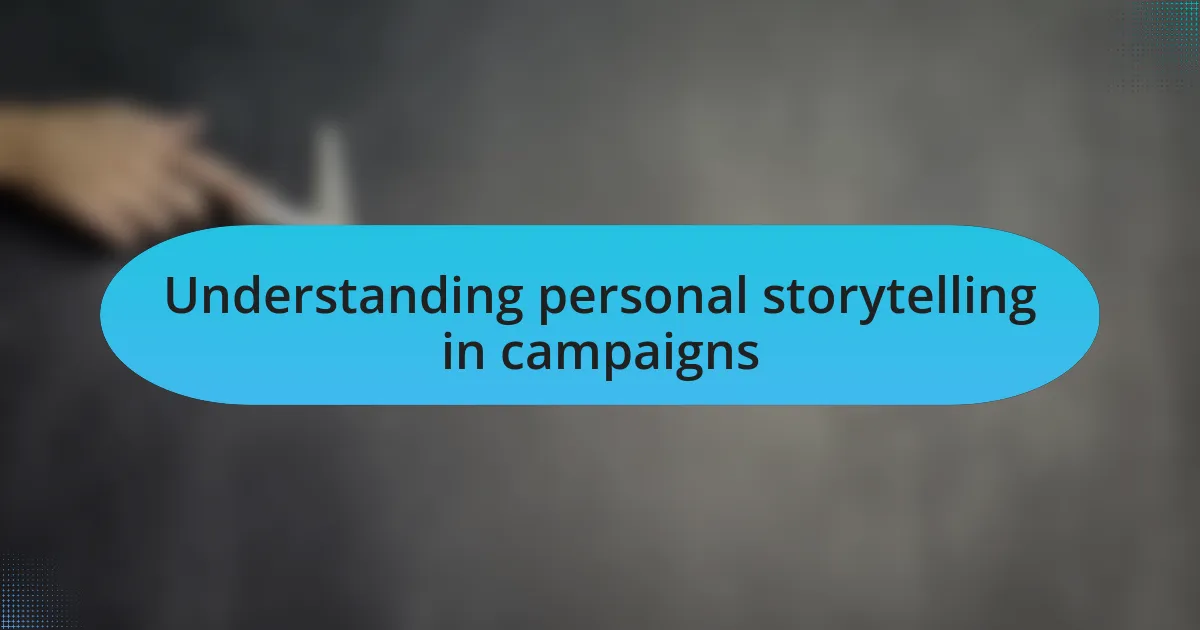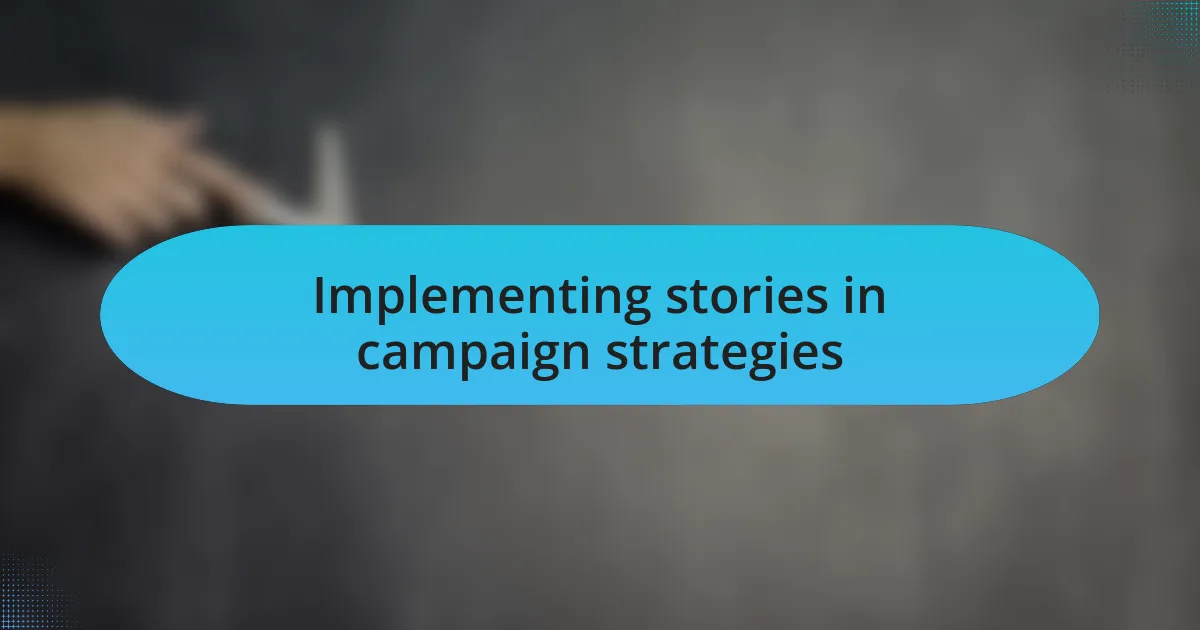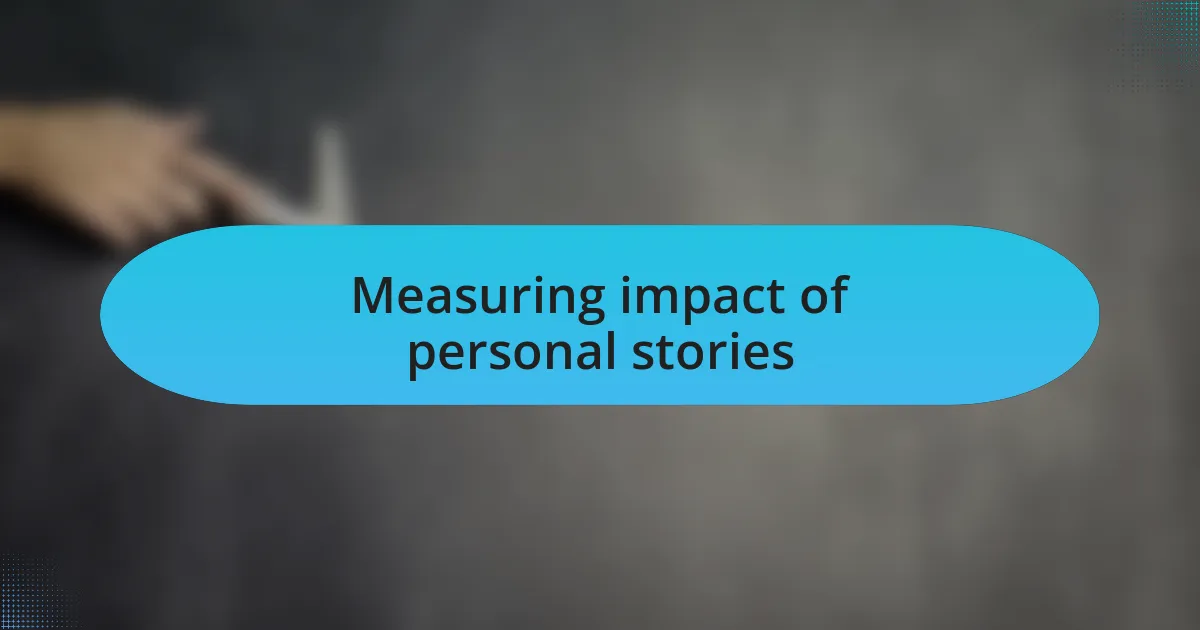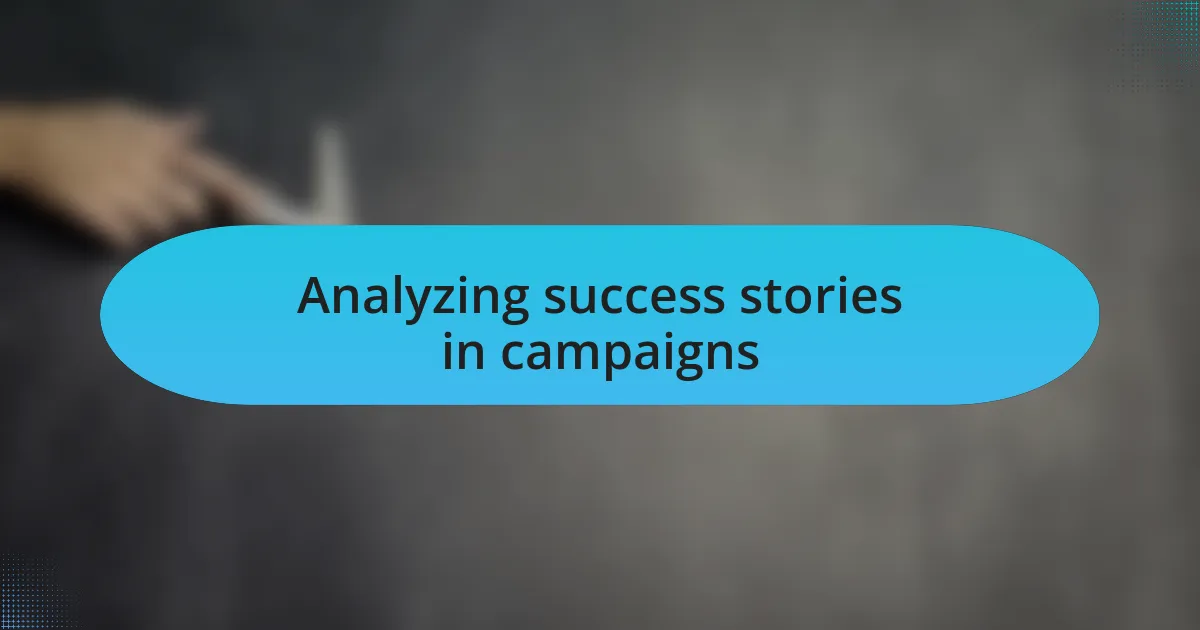Key takeaways:
- Personal storytelling creates relatable experiences that foster community and encourage engagement in campaigns.
- Utilizing diverse narratives helps students connect, enabling a more inclusive atmosphere and fostering empathy.
- Measuring the impact of storytelling includes observing engagement shifts, emotional resonance, and event participation to gauge effectiveness.
- Success stories reveal that authenticity and relatable struggles enhance connection and motivate others to share their own experiences.

Understanding personal storytelling in campaigns
Personal storytelling in campaigns transforms mere messages into relatable experiences. I remember when I shared my own struggle with balancing academics and extracurricular activities during a campaign. It connected deeply with students facing similar challenges, prompting them to share their stories and build a sense of community around our initiative.
When you bring personal narratives into your campaign, you tap into raw emotions. Have you ever felt that surge of connection when someone shares a vulnerability? I recall how I opened up about my mental health journey; the response was overwhelming. It wasn’t just about my story but rather the collective experiences that resonated with others, creating a powerful dialogue.
Storytelling isn’t just a strategy; it’s an invitation to participate. I often ask myself, how can my experiences inspire others to take action? By weaving personal anecdotes into my campaigns, I found that it encourages peers to engage and advocate for causes that matter to them too. It fosters a sense of belonging and shared purpose, something that statistics alone cannot achieve.

Crafting relatable narratives for students
Crafting relatable narratives involves understanding the unique backgrounds and struggles of your audience. I recall a time when I shared a friend’s experience transitioning into university life, highlighting the pressure and excitement that comes with it. This story struck a chord with many first-year students, allowing them to see that they weren’t alone in feeling overwhelmed and hopeful at the same time.
Another effective approach is to delve into shared experiences that often go unnoticed. For instance, I once organized a storytelling evening where students spoke about their diverse backgrounds and the complexities of fitting in. The stories ranged from funny to heart-wrenching, but the common thread was acceptance and understanding. I observed how these narratives helped create a bridge between students from different cultures, fostering a more inclusive atmosphere.
I’ve found that crafting narratives with a focus on specific moments can amplify relatability. For example, I introduced a campaign centered on “the reality of finals week,” emphasizing sleepless nights and last-minute studying. Sharing my own humorous mishaps during that time invited others to contribute their own stories, leading to a shared laughter that turned anxiety into camaraderie. After all, isn’t it refreshing to remember that we all stumble in the same boat?

Implementing stories in campaign strategies
Implementing stories in campaign strategies requires a keen sensitivity to the emotional triggers that resonate with students. For example, during a campaign focused on mental health awareness, I shared my personal encounter with anxiety, detailing how I navigated that challenging time. This vulnerability allowed fellow students to open up about their struggles, creating a powerful dialogue that reinforced the importance of support and understanding. Isn’t it amazing how one story can ignite a collective discussion on topics often left unsaid?
Moreover, another impactful tactic I utilized was featuring stories from diverse student groups within our union. I remember highlighting a classmate’s journey as a first-generation college student, showcasing the hurdles they overcame and the pride they felt upon their achievements. This narrative did more than just inspire; it prompted many others to reflect on their own journeys and share their insights, cultivating a sense of community that celebrates our varied experiences. Don’t you think that sharing such stories can shift perspectives and foster empathy?
Lastly, I learned that visual storytelling plays a crucial role in a campaign’s effectiveness. I once collaborated with students to create a video series that depicted their everyday lives, showcasing both triumphs and challenges—particularly around exam season. When students saw their peers narrate their own experiences, it made the content more relatable and engaging. It’s powerful how visual narratives can encapsulate emotions that words sometimes struggle to convey, right? This approach doesn’t just inform; it connects us on a deeper level.

Measuring impact of personal stories
Measuring the impact of personal stories hinges on observing both qualitative and quantitative shifts in engagement. For instance, after sharing a heartfelt story about overcoming academic burnout, I noticed a spike in interactions on our social media platforms. Students reached out to discuss their experiences, reinforcing that authentic narratives can foster substantial connections. Doesn’t it feel rewarding to know that being open can lead others to do the same?
Furthermore, utilizing follow-up surveys allowed me to gauge the emotional resonance of these stories. After a campaign focused on diversity, I received feedback indicating that students felt more seen and understood. This affirmation reminded me that when we measure the impact, we aren’t just looking at numbers; we’re capturing the heartbeats of fellow students finding solace in shared experiences. Isn’t that what we strive for in these campaigns?
I also found that tracking attendance at associated events provided insight into engagement levels. After hosting a storytelling night inspired by personal narratives, we saw a significant increase in student participation. It made me realize that stories can transform mere outreach efforts into vibrant community gatherings. After all, isn’t it invigorating to witness storytelling create such palpable enthusiasm?

Analyzing success stories in campaigns
Campaigns that harness personal stories often have standout success stories that can reveal what truly resonates with students. For instance, I remember a campaign centered around mental health where we shared student testimonials. One story, detailing a student’s journey through anxiety, sparked conversations that hadn’t happened before. It was eye-opening to see how one vulnerable narrative could unveil layers of shared experiences among peers.
Reflecting on these successes, I noticed patterns in the types of stories that garnered attention. Anecdotes that included relatable struggles or triumphs seemed to strike a chord. A friend shared how a single moment of encouragement changed their perspective on university life, leading to a ripple effect of motivation among their peers. Have you ever considered how your own struggles might inspire someone else? Personal narratives often serve as a bridge, making it easier for others to share their vulnerabilities.
Moreover, analyzing the data from our campaigns highlighted the importance of authenticity in storytelling. When students felt that stories were genuine, they were more likely to engage. At one event, a panel of students bared their souls about their challenges, and the emotional reaction was palpable. These profound connections illuminated how essential it is to weave personal tales into our campaigns, fostering a community built on empathy and shared understanding. Wouldn’t it be amazing to harness this potential even more?